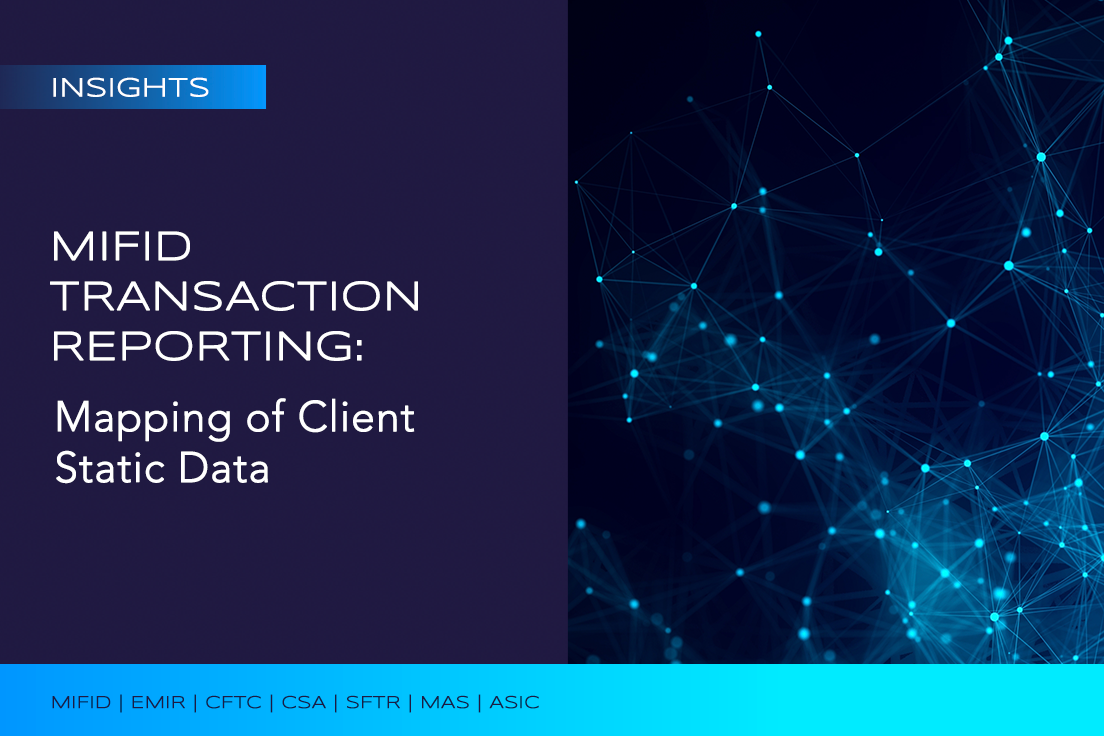Mapping of Client Static Data
Silent Errors in Your MiFID Transaction Reports
 Author: Dan Fletcher
Author: Dan Fletcher
Transaction Reporting Manager
Updated 20 October 2025
A common silent error in your transaction reporting could be lurking yet remaining undetected. Client static data is key in completing the Buyer and Seller fields effectively, as well as other fields in the transaction report. If the client data is not properly mapped to the correct, active, LEI, this may lead to compounded issues in market surveillance within your firm as well as with the regulators.
Client static data is collected at the point of onboarding a client. Client details, including the LEI, are keyed into static data systems. Aspects of the client static data may be held separately from the data that is made available to Front Office staff who are executing the trades. When trades are executed, the trader may not always select the correct entity reflecting the counterparty to the trade. Since entities are typically represented by a firm’s legal name which, in turn, are mapped to an LEI, users entering data can make a number of mistakes that can lead to the wrong entity being assigned to a transaction.
Things that routinely go wrong are:
1) Front Office staff may incorrectly select the wrong entity in their system that is mapped to another firm or branch than the one that was counterparty to the trade. This can happen frequently when dealing with clients having similar names, branches, multiple legal entities. Many times, Front Office staff lack the understanding of the exact entity they are facing – branch, headquarter, and, at times, the location.
2) Converse to the above, during onboarding an LEI may be incorrectly mapped to the wrong client. This mapping error can propagate through the entire system. OR, in smaller firms, the data may be held in separate systems and not maintained in unison.
3) Issues with lapsed or inactive LEIs arising from IT systems that not interconnected or resulting from the poor maintenance static data. For example, a trade may be executed by the Front Office against a counterparty in their system yet the LEI was inactive or lapsed due to client static data not appropriately monitored or controlled downstream.
It is essential that there are systems and controls in place to mitigate issues with static client data.
The mapping of client static data must be done diligently during onboarding, properly maintained, and permissioned so that Front Office teams only have visibility to the client data onboarded for their trading division. These steps alone can help greatly in mitigating the risk of the wrong counterparty being assigned to a trade.

